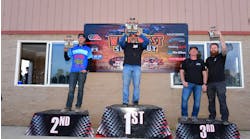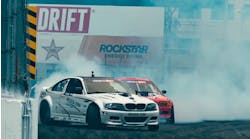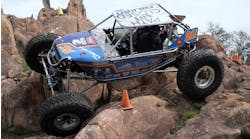Experts claim that more than 90 percent of a driver’s sensory input comes through the eyes.
It is principally for this reason that modern high-fidelity vehicle simulators are so successful in driver preparation and race car set-up. That standard is put to an extreme test at Sebring International Raceway as drivers’ pound around the fast, but notoriously bumpy 3.74-mile former airport circuit where Michelin tires play a key role in delivering a consistent, fast and well-balanced ride.
“Drivers can’t see the track edge, their braking points, or the read the bumps if the car is bouncing around. Gyrating eyeballs are not happy eyeballs,” said Chris Baker, director of motorsport, Michelin North America.
That is especially true in the darkness for the final three hours of the Mobil 1 Twelve Hours of Sebring, on Saturday March 17, (FOX Sports 1 and 2) the second stop on the 2018 IMSA WeatherTech SportsCar Championship.
Balancing the bounces
“Our Michelin GT Le Mans (GTLM) class partners, the factory linked teams from BMW, Corvette, Ferrari, Ford, and Porsche, try to manage the bumps in two ways; first by controlling the balance between compression damping over the bumps and the rebound damping,” said Baker.
Teams want their cars to be fast, consistent and to withstand the rigors of the circuit, which strains suspension pieces, gearboxes, drivetrains, tires and drivers to the limits. Michelin plays an important role in finding that balance as the tires take the initial impact or compression when the car hits the bumps. Almost instantaneously thereafter, the cars’ suspensions, which have much lower vertical spring rates than do the tires, begin to move. The greater the level of compression, the greater the forces to be managed on the rebound.
“We have designed our Michelin racing tires to be robust in dealing with those potentially-dampening impacts, which in turn enables the teams to focus on controlling suspension deflection through carefully matching the choice of springs with shock absorber tuning,” said Baker.
“A stable car is not only quicker and more consistent, it will provide a better visual platform for the driver to attack or defend positions. It is really simple; a driver has to be able to see in order to go fast.”
Getting and keeping a grip
While managing the Sebring bumps is essential, the grip levels of the circuit change throughout the race, making the selection of the Michelin cool, medium, or hot temperature tires equally important.
The majority of the circuit is asphalt, but about a third of the circuit is concrete, so the grip level changes from surface to surface several times each lap. There are also a significant temperature differences between the two surfaces, they can vary by as much as 10-15 degrees (F) during the day, and the concrete sections cool more quickly after sunset (7:35pm).
As Rick Mayer, race engineer for the famed Risi Competizione Ferrari GTLM team notes, “The track changes so much as it gets hot, as it rubbers in during the race, and then again at the end when it gets cold at the end of the race. You will run a different compound mix at the race start, the heat of the day, and at night.”
Michelin embeds a race tire engineer with each of its GTLM teams to help monitor tire performance and selection of the appropriate Michelin tire options and pressures. Staying on top of the rapidly-changing conditions is a particular challenge at Sebring and is why both Michelin’s engineers and the teams they support are often as (or more) exhausted at the end of 12 hours of racing at Sebring than they are after 24 hours of racing at Daytona or at Le Mans.



